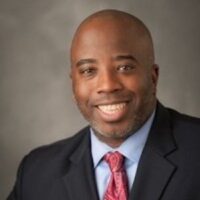What Is Underwriting For Racial Justice?
Since 2021, Beneficial State Foundation’s Underwriting for Racial Justice program has held monthly working group meetings with more than 100 lenders, community-based organizations, policy advocates, regulators, and researchers to discuss how to dismantle the underwriting practices that exacerbate racial inequality. In 2023, the foundation invited lenders to engage more deeply with this program via loan pilots that test new or different underwriting practices to see how well they can increase capital access for people of color. Check out the program planning guide for more details..
Many organizations in recent years have made efforts to improve social and racial justice within their communities and across the country; however, disparities persist. According to a May 2023 Federal Reserve report, credit denial rates were higher for Black and Hispanic adults — regardless of income level — than for other racial and ethnic groups. Black applicants who earned $100,000 or more were more than twice as likely to be denied credit or approved for less than requested than white applicants of the same income level.
That could soon change.
That’s because a collaboration headed by the Beneficial State Foundation — an organization dedicated to financial justice and systemic change — is piloting a program aimed at increasing access to credit for people of color. The two-year Underwriting for Racial Justice Lender Pilot Program brings together 20 lenders, including three credit unions, to explore and implement new underwriting practices.
The foundation provides consultation support as well as resources, including tools, templates, training, and access to a state-of the art predictive analysis and credit decision management platform. It also is collecting loan-level data to share results and disseminate the pilot program’s findings.
For their part, the selected lenders, which include Rivermark Community Credit Union and WSECU along with CDFIs and community banks, are committed to increasing their lending to people of color and will implement loan pilots to test new or different underwriting practices. They also participate in ongoing training and discussions as well as share challenges, successes, and ideas to drive industrywide change.
People Helping ALL People
Rivermark Community Credit Union ($1.4B, Beaverton, OR) has focused on creating equitable access to capital for some time. The credit union’s internal work began by focusing on its underwriting practices for small business loans before moving on to mortgage and consumer loans in a phased approach.
The cooperative has a small business loan to help minority-owned, women-owned, and veteran-owned businesses obtain flexible financing to grow their businesses. Rivermark also now offers ITIN mortgage loans to help members who do not have a Social Security number but do have an Individual Taxpayer Identification Number (ITINs) purchase a home.

“Since we have performing loan programs, we’ll provide that data to the foundation to assist other lenders,” says Aben Hill, chief lending officer for Rivermark. “One of the exciting things about this pilot program is that we’re all in different places. It’s a great opportunity for everyone to have collegiate and beneficial conversations about underwriting practices.”
Regardless of where a lender is in its journey to providing more equitable access to credit, Hill looks forward to analyzing new data and gaining from other financial institutions’ perspectives. Others might have additional data to contribute in terms of borrower demographics and risk factors, he notes.
During the next several months, Rivermark will hold a series of two-hour team meetings with some of the other participating lenders. These practice sessions will continue, at least monthly, for the duration of the two-year program and be used to review materials, prepare product plans, and share ideas. The interactive sessions, along with access to enhanced tools like the Stratyfy system, also will provide opportunities for participants to look at underwriting through a new lens.
For Rivermark, that means identifying new ways to become more effective and minimize inherent biases.
“This is a great opportunity to look under the hood from another vantage point, using additional tools and gaining from the different perspectives of other lenders as we revamp our own fair lending and credit policies,” Hill says.
CU QUICK FACTS
Rivermark Community Credit Union
DATA AS OF 06.30.23
HQ: Beaverton, OR
ASSETS: $1.4B
MEMBERS:90,102
BRANCHES: 13
EMPLOYEES: 291
NET WORTH: 9.2%
ROA:0.44%
It’s still too soon to set specific goals or implement product plans, but Rivermark hopes the insight it gains through the program will help the credit union set realistic and sustainable goals. It also plans to use the program to help it look at its underlying practices, evaluate how inclusive they are, and determine how to best empower members to make informed credit decisions.
“By looking at the lending process holistically, we hope to avoid unintended consequences and meet our members where they are,” Hill says. “What we do impacts the member, but it also impacts that member’s entire family. Knowledge about and access to credit has a generational impact.”
Through this pilot program, Hill also hopes to debunk misperceptions. Marginalized communities are often thought of as high-risk and not profitable, so Rivermark delicately balances the way it provides access to capital to avoid charge-offs that reinforce those common misperceptions.
“People aren’t marginalized because it’s a choice,” Hill says. “They are facing systemic challenges.”
Access to information on how to manage credit, buy a car, become a homeowner, and start a small business is vital for Rivermark’s members. To provide that information, it relies on community partnerships.
“Our nonprofit partners are out there interacting with marginalized communities daily,” Hill says. “They are able to let them know about the financial programs and resources we offer.”
Instead of running separate programs in parallel, Rivermark hopes to marry the work of these nonprofits with its own equitable access lending programs.
“The magic is in the intersection, which is why creating these partnerships is so important,” the CLO says.
Hill encourages credit union leaders to consider how their credit unions can be not only an organization of “people helping people” but an organization of “people helping ALL people.”
He also encourages credit unions to actively create and implement plans to achieve racial justice. To this end, Hill advises leaders to avoid complacency and continue challenging themselves, their thoughts, and their actions.
Big Problems Require Big Thinking
Learn how to solve institutionally entrenched problems, like how to improve equity in lending, while your executive team members gain the skills and insights they need to become transformative leaders. You can do all this and more with a purpose-driven strategic model — and Callahan can help. Join the hundreds of credit union leaders who have discovered how to lead with purpose.
Learn More Today

The Impact Of Homeownership
The directive to be more impactful in how WSECU ($5.1B, Olympia, WA) serves its community — specifically its BIPOC community — came straight from its board of directors.
First up: A focus on affordable housing. In 2022, the credit union launched initiatives — including one-on-one counseling and a Welcome Home Grant for first-time buyers — to help increase Black homeownership and hired two full-time staff members to spearhead those initiatives.
“Achieving stability and financial health — it all seems to stem from the ability to become a homeowner,” says David Puszczewicz, director of community homeownership development for WSECU.

As a former non-profit leader, Puszczewicz has been learning about financial institutions from the inside and infusing community development outreach and education components into his credit union’s affordable housing initiatives.
Like Rivermark, WSECU recognizes the difference between perceived and actual risk in underserved communities and is seeking ways to enhance its community reach and elicit involvement from those most impacted.
“The data component portion of the Underwriting for Racial Justice pilot program is important for us to track the results and ensure we’re delivering sustainable solutions,” Puszczewicz says.
Several leaders from WSECU are involved in the pilot program, which the cooperative hopes will enhance the line of communication between underwriting and front-line staffers who see what’s going on out in the field.
“Those are often two very different perspectives,” the WSECU director says. “So pairing the two sides is exciting.”
CU QUICK FACTS
WSECU
DATA AS OF 06.30.23
HQ: Olympia, WA
ASSETS: $5.1B
MEMBERS: 302,432
BRANCHES: 23
EMPLOYEES: 765
NET WORTH: 9.2%
ROA: 1.60%
The outside perspective offered by the cohort is also attractive to WSECU, especially as it expands counseling and launches new special purpose credit programs.
“Having a forum like this and being able to discuss our plans with lenders outside of WSECU is a great way for us to continue to learn and enhance what we’re doing,” Puszczewicz says.
In addition to committing underwriting and community development resources to the pilot program, WSECU expects it will need a good deal of IT support as it prepares to submit quarterly data downloads and learns how to use the Stratyfy system.
“WSECU laid the foundation for the team to do the work with the support of the entire organization, which is really exciting,” Puszczewicz says.
WSECU has already embedded DEI in how it operates, but there is always more work to be done. It’s important for all credit unions to really look within the organization and seek ways to reduce unconscious bias when serving diverse communities, Puszczewicz says.
Are You Underserving Your Market? Dig into U.S. Census data to discover more about who you’re serving … and who you’re not. Callahan’s Peer Suite helps credit union lenders gain key insights into their borrower pool by slicing and dicing data according to variables like age, race/ethnicity, and income. Armed with this intel, leaders can make lasting, impactful changes to programs, processes, underwriting, and more. Start your transformation today.